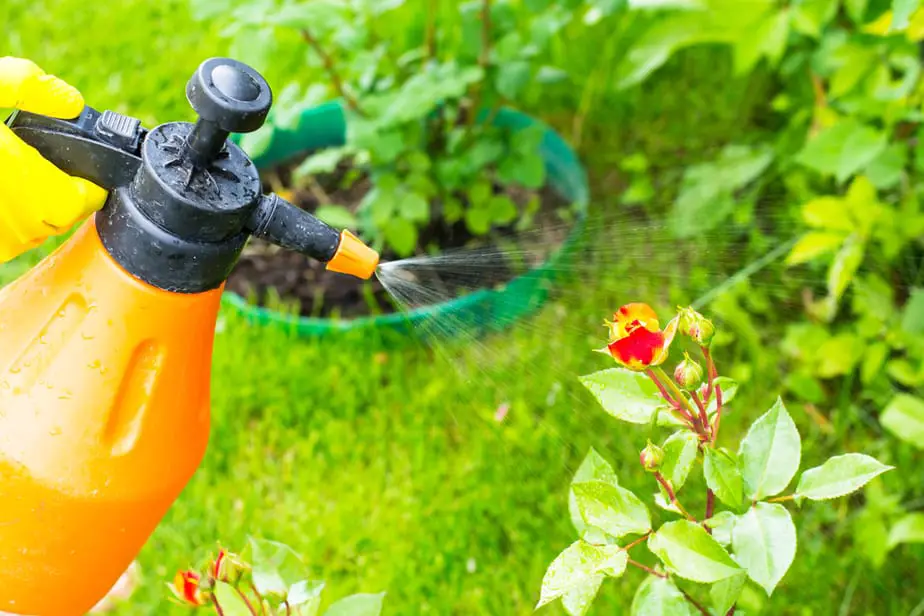How to Prevent Pests in Organic Gardens: Eco-Friendly Tips

Imagine your garden as a bustling city. Just as cities attract tourists, gardens attract pests. But instead of welcoming these unwanted visitors, we want to gently deter them. In the world of organic gardening, pest control isn't about declared war but rather diplomatic negotiations. So, how do we prevent pests in organic gardens without harming the environment? Let's dive into some eco-friendly tips that'll help you maintain a harmonious garden ecosystem.
Understand Your Garden Pests
Before we delve into organic pest control strategies, it's crucial to understand our tiny adversaries. Garden pests aren't just insects; they also include rodents, birds, and even deer. Each has its preferences and dislikes, making it essential to identify the pests in your garden. The Royal Horticultural Society provides a comprehensive list of common garden pests to help you recognize your miniature foes.
Embrace Organic Pest Control
Organic pest control isn't about eradication; it's about balance. Our goal is to maintain a healthy ecosystem where pests are managed, not eliminated. Here's how you can achieve that:
Encourage Natural Predators
Nature has its own checks and balances. By inviting beneficial insects and animals into your garden, you can control pests naturally. Ladybugs, birds, and even bats feast on common garden pests. To attract these helpful creatures, plant a diverse range of flora, install birdhouses, and consider adding a bat box to your garden.
Use Natural Repellents
Many plants possess natural repellent properties. For instance, certain herbs like mint, rosemary, and lavender deter rodents and insects. Interplant these among your vegetables and flowers to create a natural barrier. You can also use essential oils from these plants to create DIY repellent sprays. Remember, the aim is to deter, not destroy.
Practice Companion Planting
Companion planting is like matchmaking for plants. Certain plants thrive together, while others repel pests when paired. For example, planting marigolds around tomatoes can deter nematodes (microscopic worms), while nasturtiums attract aphids away from other plants. The National Sustainable Agriculture Information Service offers a helpful guide on companion planting.
Maintain a Healthy Garden
A healthy garden is a resilient one. Here's how to keep your green sanctuary in tip-top shape:
Keep Your Garden Clean
Pests thrive in chaos. Dead leaves, weeds, and decaying plant matter provide shelter and food for unwanted guests. Regularly clean your garden to eliminate these temptations. Think of it as tidying up your city to discourage loitering.
Rotate Your Crops
Crop rotation is like a puzzle that confuses pests. By changing the location of your plants each growing season, you disrupt pests' lifecycles and prevent infestations. This practice also improves soil health, making your garden more resilient.
Water Wisely
Overwatering can attract pests and promote disease. Water your plants deeply but infrequently to encourage strong root systems. Also, water early in the day to allow leaves to dry, discouraging fungal growth.
Physical Barriers: The Garden Fortress
Sometimes, the best offense is a good defense. Physical barriers can protect your plants without harming pests.
Netting and Row Covers
Netting and row covers act like a force field around your plants, protecting them from birds, rodents, and insects. These barriers allow sunlight, water, and air to pass through while keeping pests out.
Copper Tape and Mesh
Copper is a natural repellent for slugs and snails. Wrapping copper tape around pots or creating a copper mesh barrier can deter these slimy invaders.

Organic Pesticides: The Last Resort
While organic pest control focuses on prevention, sometimes pesticides are necessary. Opt for organic, eco-friendly options like:
- Neem Oil: Derived from the neem tree, this oil disrupts insects' hormonal systems, preventing them from feeding and breeding.
- Diatomaceous Earth: This powder is made from fossilized algae. It's harmless to humans but deadly to insects, damaging their exoskeletons and causing dehydration.
- Insecticidal Soap: This soap breaks down the protective outer layer of soft-bodied insects, causing them to dehydrate.
Conclusion: Harmony in the Garden
Preventing pests in organic gardens isn't about annihilation; it's about coexistence. By understanding your pests, embracing natural repellents, maintaining a healthy garden, and using physical barriers, you can create a harmonious ecosystem. Remember, every garden is unique, so experiment with different methods to find what works best for you.
Happy gardening! Let's make our green spaces thriving, eco-friendly sanctuaries. Share your organic pest control success stories in the comments below. Together, we can learn and grow.
FAQs
-
What is the best natural pesticide? The 'best' natural pesticide depends on the pest you're targeting. Neem oil, diatomaceous earth, and insecticidal soap are all effective, eco-friendly options.
-
How can I attract beneficial insects to my garden? Plant a diverse range of flowers and herbs, provide a water source, and create habitats like birdhouses and insect hotels.
-
What is companion planting? Companion planting involves pairing plants that benefit each other, either by enhancing growth, improving flavor, or deterring pests.
-
How can I prevent pests without harming the environment? Focus on prevention strategies like maintaining a clean garden, encouraging natural predators, using physical barriers, and opting for organic pesticides as a last resort.
-
What are some common garden pests? Common garden pests include aphids, slugs, snails, rodents, and birds. The specific pests in your garden will depend on your location and the types of plants you grow.

0 Response to "How to Prevent Pests in Organic Gardens: Eco-Friendly Tips"
Post a Comment